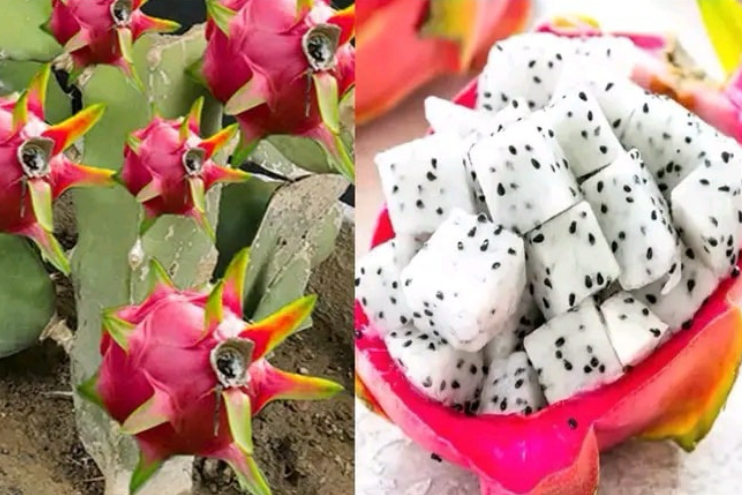Step 1: Choose the Right Location
Sunlight: Dragon fruit plants thrive in warm, sunny locations. They need at least 6-8 hours of direct sunlight daily. Choose a spot in your garden or on your patio that gets ample sunlight.
Space: These plants can grow quite large and spread out. Ensure there is enough space for the plant to grow and climb.
Step 2: Prepare the Soil
Soil Type: Dragon fruit plants prefer well-draining soil. Sandy or loamy soil is ideal. If your soil is heavy clay, consider mixing in sand or perlite to improve drainage.
pH Level: The ideal pH for dragon fruit plants is between 6.0 and 7.0. You can test your soil’s pH and adjust it if necessary by adding lime to raise the pH or sulfur to lower it.
Step 3: Planting the Dragon Fruit
Cuttings or Seeds: You can start dragon fruit from seeds, but using cuttings is faster and more reliable. If using cuttings, ensure they are at least 12 inches long.
Planting Depth: Plant the cutting about 2 inches deep in the soil. If planting seeds, plant them shallowly, just under the soil surface.
Support Structure: Dragon fruit plants are climbing cacti, so they need a support structure. Install a trellis or a sturdy post near the plant to support its growth.
Step 4: Watering
Frequency: Water the plant regularly but avoid overwatering. Dragon fruit plants are drought-tolerant but do best with consistent moisture. Water the plant deeply, allowing the soil to dry out slightly between waterings.
Drainage: Ensure the pot or planting area has good drainage to prevent waterlogged soil, which can lead to root rot.
Step 5: Fertilizing
Type: Use a balanced, slow-release fertilizer every 6-8 weeks during the growing season. A fertilizer high in phosphorus can promote blooming and fruiting.
Application: Apply the fertilizer around the base of the plant, avoiding direct contact with the stem to prevent burning.
Step 6: Pruning and Training
Pruning: Prune the plant to remove dead or damaged branches and to encourage airflow. Pruning helps the plant focus its energy on producing fruit.
Training: Train the plant to climb the support structure by tying the branches to the trellis or post. This will help the plant grow upright and make harvesting easier.
Step 7: Pollination and Harvesting
Pollination: Dragon fruit plants are self-pollinating, but hand pollination can increase fruit yield. Use a small brush to transfer pollen from one flower to another.
Harvesting: The fruit is ready to harvest when the skin is bright purple and slightly soft to the touch. Typically, dragon fruit takes about 30-50 days to mature after flowering.
Harvesting Method: Use a sharp knife or scissors to cut the fruit from the plant, leaving a small stem attached to the fruit.
